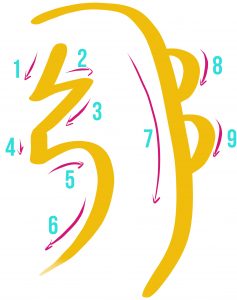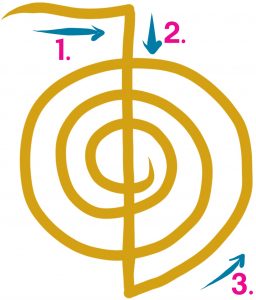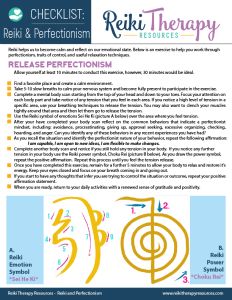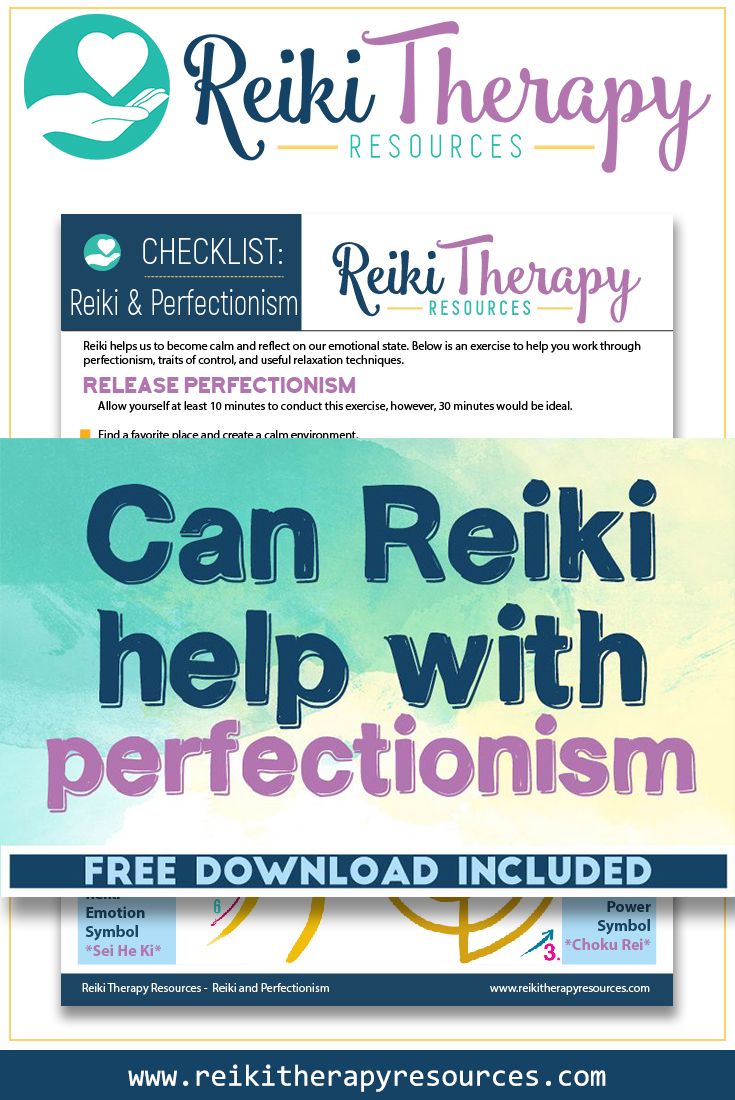
THIS POST INCLUDES:
——————————————–
1. What is perfectionism?
2. Is perfectionism possible?
3. Perfectionist behaviours
4. Achieving a balance
5. FREE DOWNLOAD Reiki Exercise for Perfectionism
WHAT IS PERFECTIONISM
Perfectionism is rarely about achieving a known standard of being perfect. Instead, perfectionism is usually about our perception. It’s about pursuing high standards that we have formulated in our minds. You might find that two “perfectionists” hold completely different standards of what perfect is.
Perfectionism is about how we judge our self-worth and those around us. Unfortunately, the pursuit of perfectionism usually results in a negative mindset vs a positive mindset. Therefore, it stands to reason that when we set the standards of perfect so high that we rarely achieve it, then we will rarely get to experience the satisfaction of achieving it.
IS PERFECTIONISM POSSIBLE?
Perfectionism is often seen as a positive state to pursue because the connotation is that we are working towards excellence. Perfectionism is tied to efficiency, organisation, and highly developed skills. Ironically though, the high standards we attach to perfectionism can sometimes get in our way as we expend more energy on the pursuit of an imagined standard instead of actually progressing in our desired goal.
Perfectionism is also self-defeating because as soon as we reach our ideal standard of perfectionism, we begin to raise the bar to achieve an even higher level of perfection. The expectations we place on ourselves rarely provides us with an opportunity to appreciate our hard work and achievements.
This means we are constantly faced with failure or the potential threat of failure and as a result, we are constantly criticizing ourselves about our thoughts and behaviours. This constant criticism can often lead to frustration, anger, worry, disgust, and a persistent sense of low self-worth.
In some areas of our life, we feel content with our standards, however, in other areas we feel that we are failing our own standards. Being a perfectionist can sometimes mean we apply high standards to all areas of our life or sometimes only one or a few areas in our life.
PERFECTIONIST BEHAVIORS:
Some common behaviors that indicate a perfectionist mindset include:
- Avoidance – avoiding a situation for fear of failure
- Procrastinating – delaying a situation for fear of failure
- Giving up – leaving a situation for fear of failure
- Approval seeking – constantly seeking approval that your efforts are acceptable
- Excessive organizing – can make you feel you are being attentive to the goal
- Checking – repeatedly checking the outcomes of something you are focused on. Examples include – work you’ve done, your weight, if someone has read your message
- Hoarding – keeping belongings for an excessively long time ‘just in case’
- Anger – at a situation, person, or yourself for not meeting a standard of ‘perfect’
Beyond these behaviours there can be significant detriment including depression, relationship breakdowns, insomnia, eating disorders, and general poor health.
ACHIEVING A BALANCE
The pursuit of high standards can help us achieve goals and challenge our personal growth. In many cases it can actually save lives if you think of the consequences of training a brain surgeon.
However, it’s important to remember that life is imperfect and so are we. The goal is not to eliminate high standards entirely. The goal is to work towards a balance of flexible standards within your own life.
It is helpful to recognize when we perceive we have failed according to our perfectionist standards and how to develop a mindset that encourages and accepts our individual efforts.
REIKI EXERCISE FOR PERFECTIONISM
Reiki helps us to become calm and reflect on our emotional state. Below is an exercise to help you work through perfectionism, traits of control, and useful relaxation techniques.
- Find a favorite place and create a calm environment.
- Take 5-10 slow breaths to calm your nervous system and become fully present to participate in the exercise.
- Complete a mental body scan starting from the top of your head and down to your toes. Focus your attention on each body part and take notice of any tension that you feel in each area. If you notice a high level of tension in a specific area, use your breathing techniques to release the tension. You may also want to clench your muscles tightly around that area and then let them go to release the tension.
- Use the Reiki symbol of emotions Sei He Ki (picture A below) over the area where you feel tension.
 
 - After your have completed your body scan reflect on the common behaviors that indicate a perfectionist mindset, including: avoidance, procrastinating, giving up, approval seeking, excessive organizing, checking, hoarding, and anger. Can you identify any of these behaviors in any recent experiences you have had?
- As you recall the situation and identify the perfectionist nature of your behavior, repeat the following affirmation: I am capable, I am open to new ideas, I am flexible to make changes.
- Complete another body scan and notice if you still hold any tension in your body. If you notice any further tension in your body use the Reiki power symbol, Choku Rei (picture B below). As you draw the power symbol, repeat the positive affirmation. Repeat this process until you feel the tension release.
 
 - Once you have completed this exercise, remain for a further 5 minutes to allow your body to relax and restore it’s energy. Keep your eyes closed and focus on your breath coming in and going out.
- If you start to have any thoughts that infer you are trying to control the situation or outcome, repeat your positive affirmation statement.
- When you are ready, return to your daily activities with a renewed sense of gratitude and positivity.
FREE DOWNLOAD
SIGN UP below to receive your FREE DOWNLOAD – Reiki Exercise for Perfectionism Worksheet.
This free download can also be accessed as an Evernote document to save to your own Evernote account. You can view the Evernote document even if you do not use Evernote.
SIGN UP below to receive your FREE DOWNLOAD

BUILD YOUR REIKI REFERENCE MATERIALS:
Pin this image to your Pinterest board.

SHARE KNOWLEDGE & PASS IT ON:
If you’ve enjoyed this post, please share it on Facebook, Twitter, Pinterest. Thank you!
